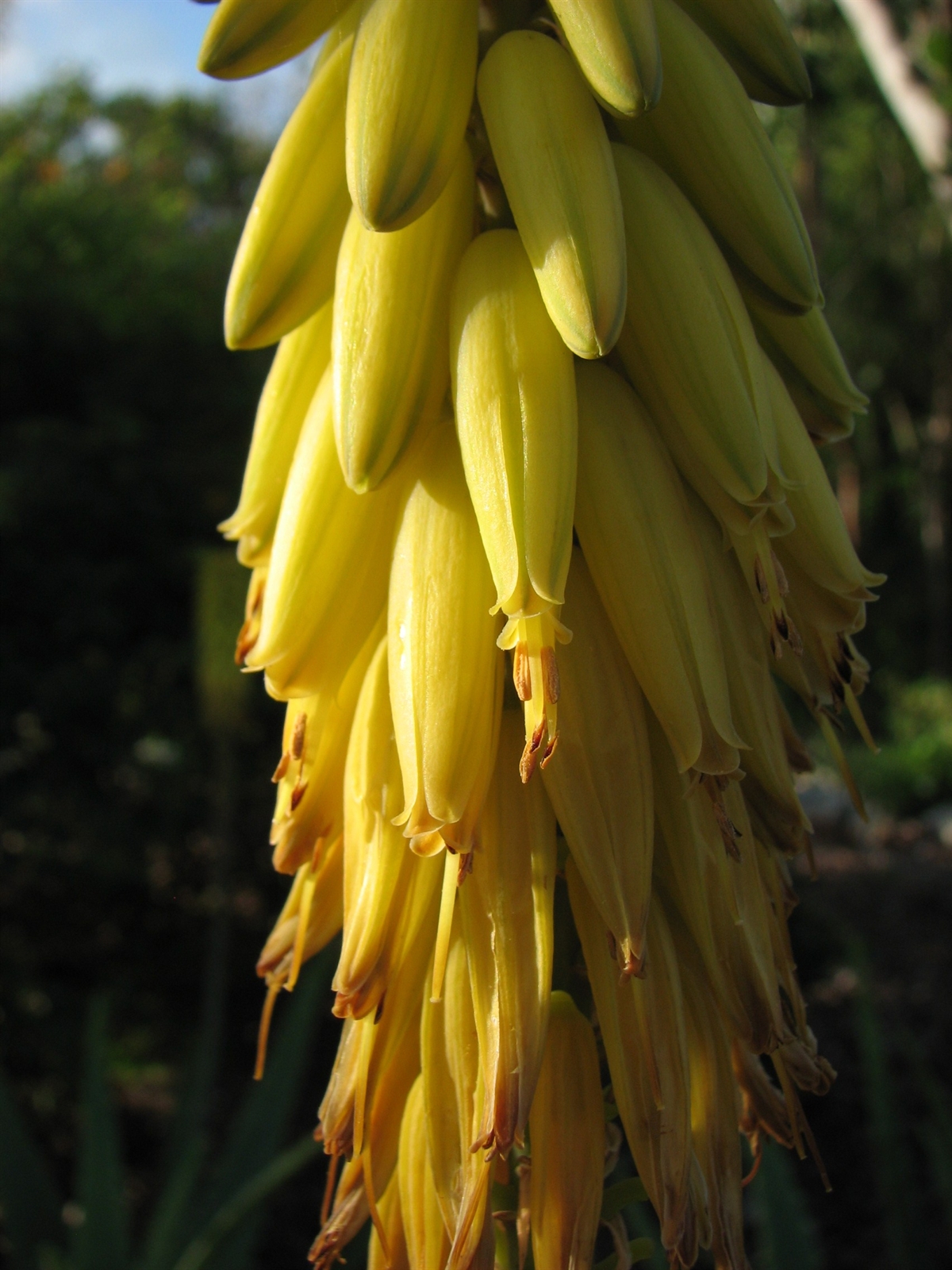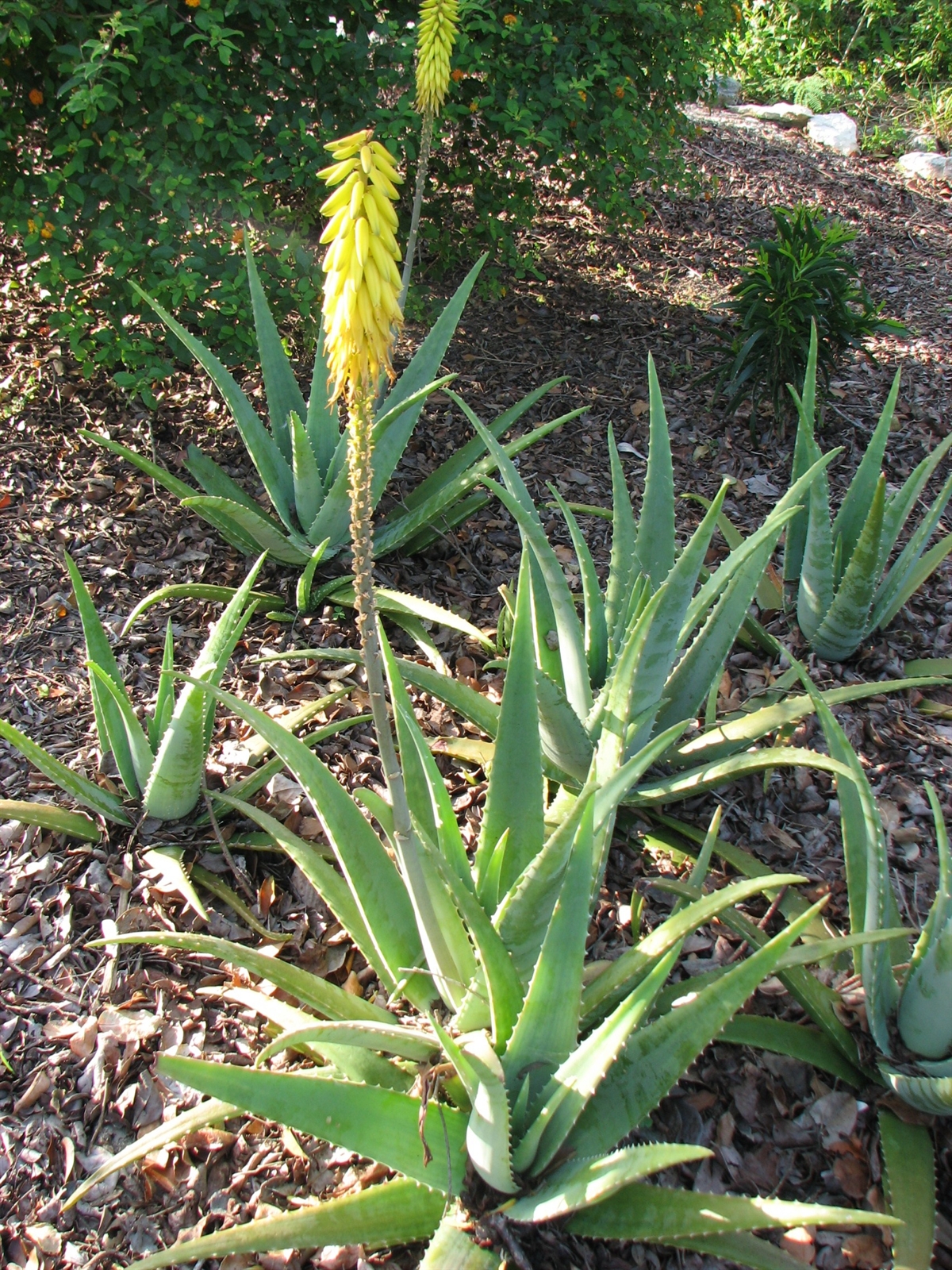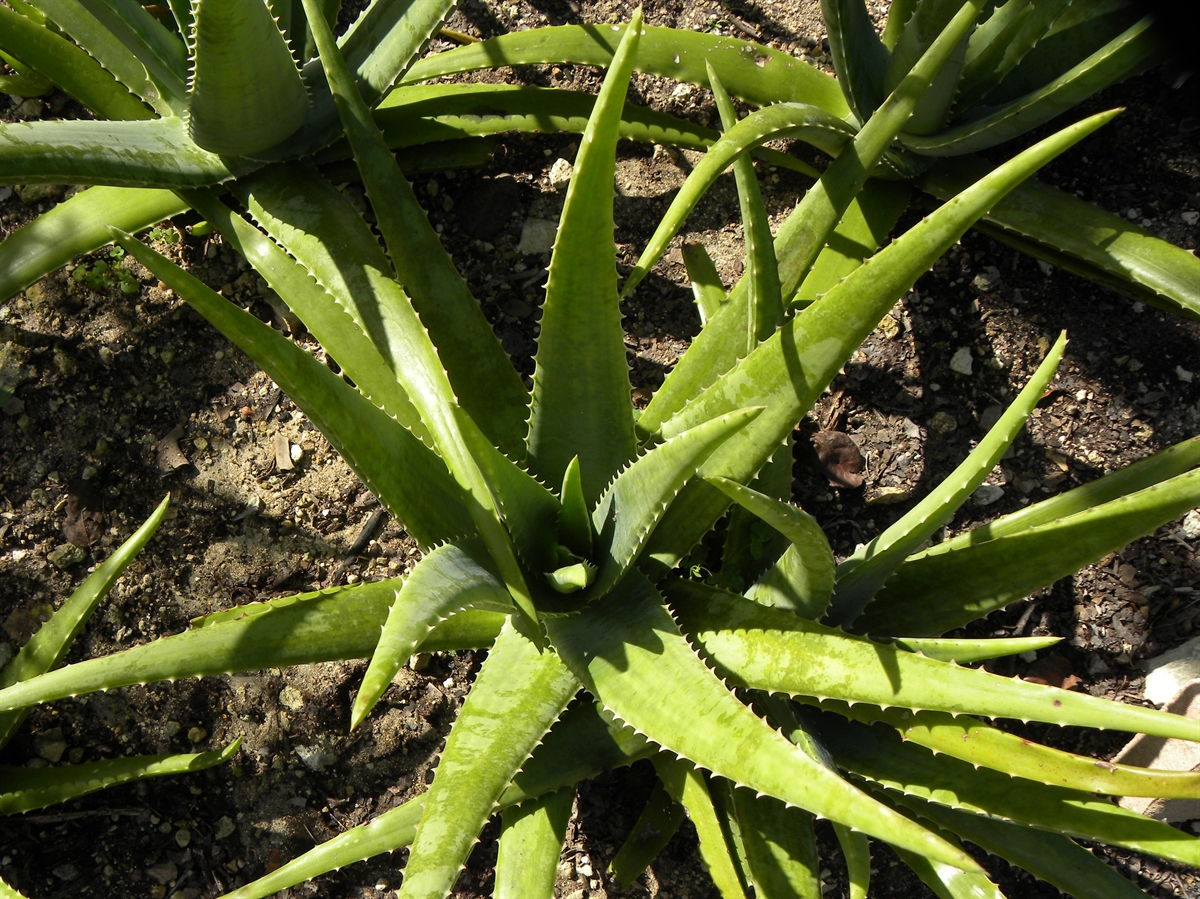Habit: Aloe vera grows as a succulent with a basal rosette in clumps or spreading via stolons. Older specimens will produce stems with rosettes at the ends. The leaves are to 60 cm in length, lanceolate with serrated spine-like margins and an acute leaf apex. The leaves may produce a yellow, milky latex.
The complete, perfect, actinomorphic flowers are arranged in racemes. A bract subtends each flower. The calyx has 3 sepals. The corolla has 3 petals. The calyx and corolla are fused into a single, yellowish tube. There are 6 unfused stamens. The ovary is superior with 3 locules and numerous seeds. The fruit is a capsule at maturity.
Habitat: Aloe vera grows in Human Altered environments (yards, fields, and in and around abandoned houses).
Distribution: Aloe vera is native to the Mediterranean region (north Africa) but is naturalized throughout the subtropical regions of the world. It is found on all island groupings in the Lucayan Archipelago.
Medicinal/Cultural/Economic usage: Aloe vera has numerous medicinal uses including dermatological (burns, blisters, wounds), gastrointestinal (cascading, constipation, stimulating appetite, indigestion, worms), colds and fevers (coughs), circulatory (diabetes), pain (sprains), and gynecology/obstetrics (improve menstrual flow, abortion, wean children from breasts or thumb sucking).


